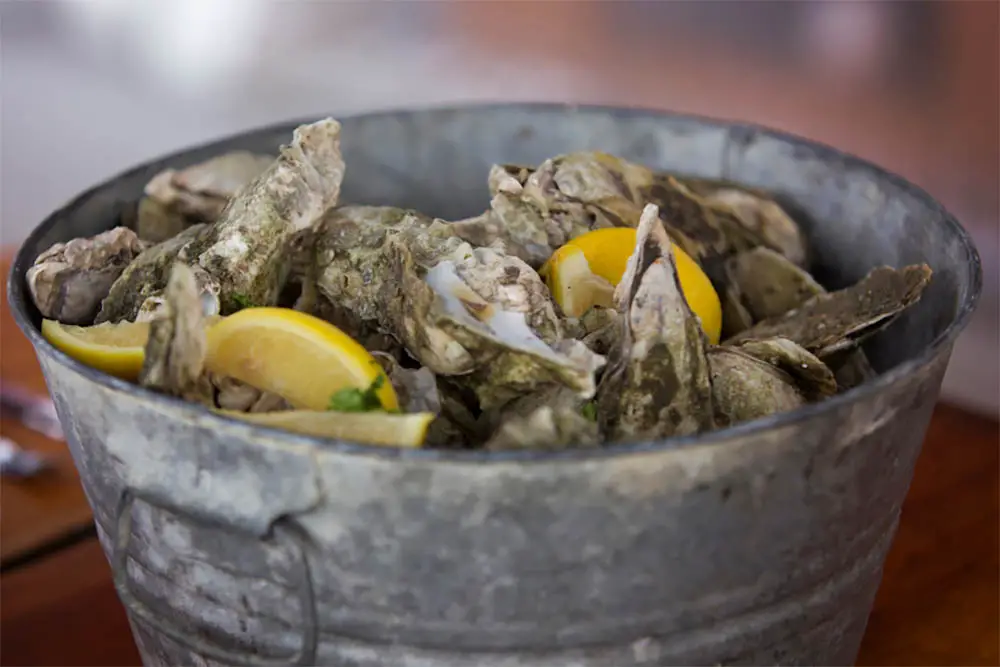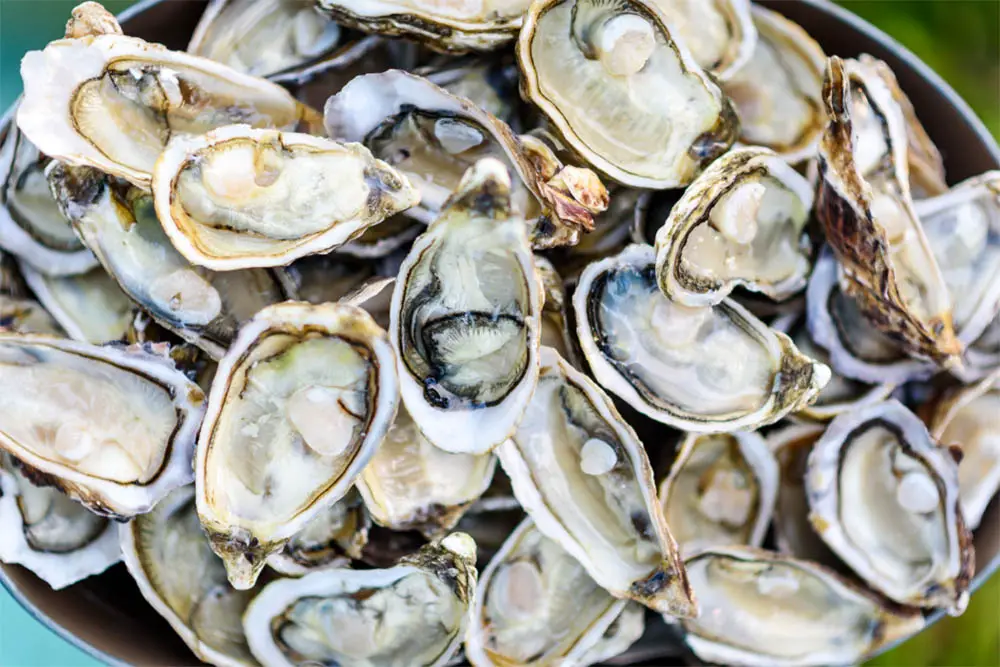Disclosure: Thank you for reading our articles! Some links may be affiliate links. We may get paid if you buy something or take an action after clicking one of these links. Additionally, as an Amazon Associate, I earn from qualifying purchases.
Oysters are an important part of our environment. They have the natural ability to filter water by passing it through their gills.
By doing this, oysters filter unwanted nutrients helping improve the overall water quality.

These natural filtering abilities are essential to keeping ecosystems healthy and strong.
Oysters tend to settle into groups known as banks or reefs. These then create habitats for other types of creatures.
The largest oyster populations currently in the US are in Willapa Bay, Washington, and along the coasts of Florida and Texas in the Gulf of Mexico. Unfortunately, populations have dwindled in certain areas due to overfishing.
When harvested, fishermen use tongs and scrapers to move the oysters from their beds.
Ever since the early 1900s when oysters became popular among working-class New Yorkers, they have become ever more popular around the world.
You will often find them on most restaurant menus and they can be served raw, baked, steamed, broiled, fried, or smoked.
When purchasing oysters, you will typically be offered a bushel. A bushel of oysters is the measurement taken for a sack of oysters.
The term “bushel” is an imperial and US unit of volume and is derived from the French “buissiel” which translates to “little box”.
It is based on an earlier measurement of dry capacity with one US bushel equalling 8 US dry gallons. However, this is not so strict with a bushel of oysters.
Typically, a bushel of oysters will weigh between 45 and 60 pounds. Within this, you will usually find around 100 to 150 oysters.
However, the number of oysters in a bushel can vary depending on the size of the oysters. The bigger the oysters, the fewer there may be.
There is no exact number of oysters in a bushel but some can feed up to 16 people. On most occasions, however, a bushel should feed between four and six hungry mouths.
Although a unit of measurement, a bushel is quite vague as there is no exact answer to how many oysters are in every bushel.
The weight of an oyster is measured by its shell. Therefore, if an oyster has a thick shell, you may end up with a smaller bushel in terms of weight. As stated, the size of the oysters determines how many are in a bushel.
It can also depend on the type of oysters. Shucked oyster sizes tend to be based on the number of individual oysters within a specific volume.
The largest size for shucked oysters are known as counts (160 oysters or less per gallon), then extra selects (161 to 2010 oysters per gallon), selects (210 to 300 oysters per gallon, standards (300 to 500 oysters per gallon), and on very rare occasions, very small (in excess of 500 oysters per gallon).
Oysters in their shells are sold raw and many retail seafood markets sell these by the piece.
As well as being measured by the bushel, they can also be measured by the dozen, the peck, or in 100-pound bags.
A bushel is equivalent to 4 pecks, 8 gallons, and 32 quarts. One US bushel is equal to 2150.42 cubic inches while one Imperial bushel is equal to 2219.46 cubic inches.
The sizes of these raw oysters vary depending on their species and location. Generally speaking, there are around 100 oysters per bushel in the US or 25 per peck.
How many bushels of oysters can you feed per person?
On average, a bushel of oysters should feed between four to six people.
However, some bushels can feed far more depending on their size. One bushel of oysters may feed one person but this would have to be over a few sittings.
With the average bushel of oysters weighing 45-60 pounds, we can’t see anyone sitting down to eat a full bushel any time soon.

Of course, it can also depend on how much you like oysters. Some people do not like the salty taste or distinct texture of oysters.
If this is the case, a bushel of oysters may be too much for five or six people.
On the whole, it is recommended that you order six oysters per person for appetizers. However, there are a few factors to consider before figuring out how many oysters you should serve someone. These include:
- What other food will be served? - If another main is being served, people will require fewer oysters. Therefore, a bushel of oysters should be more than enough for a small party of people.
- Do your dinner guests like oysters? - Yes, we believe everyone should be big fans but you should still ask before ordering too many oysters.
- How long will you be eating/having dinner? - Oysters should come out in batches if you’re at a social gathering. As long as they are stored in a cool place, a party of six should continue to eat a bushel of oysters easily throughout the evening.
Of course, on occasions, a bushel will contain fewer oysters than another.
However, the weight should always be similar. Therefore, it can be difficult to pinpoint how many bushels is enough for one or more people. If you’re with a group of people who love oysters, the more bushels the better!
How much is a bushel of oysters?
The price of a bushel of oysters depends on the location of the oysters and the restaurant. At crabplace.com, you can buy a dozen fresh oysters for just $25.77.
If you’re having a special occasion, then the more oysters, the better! Therefore, you may opt for their “By the 100 count”. This is $150.85 and will easily feed many people.
Crabplace.com also offers shucked oysters. A pint costs $29,69, 3 pints is $80.99, and a gallon will set you back $179.99. Whether you’re an oyster lover or meeting up with some friends, there is something here for everyone. Check the site for the latest prices!
Bushel prices differ throughout the country but a bushel should usually cost around $50. This will contain around 100 to 150 oysters weighing 45 to 60 pounds in total.
